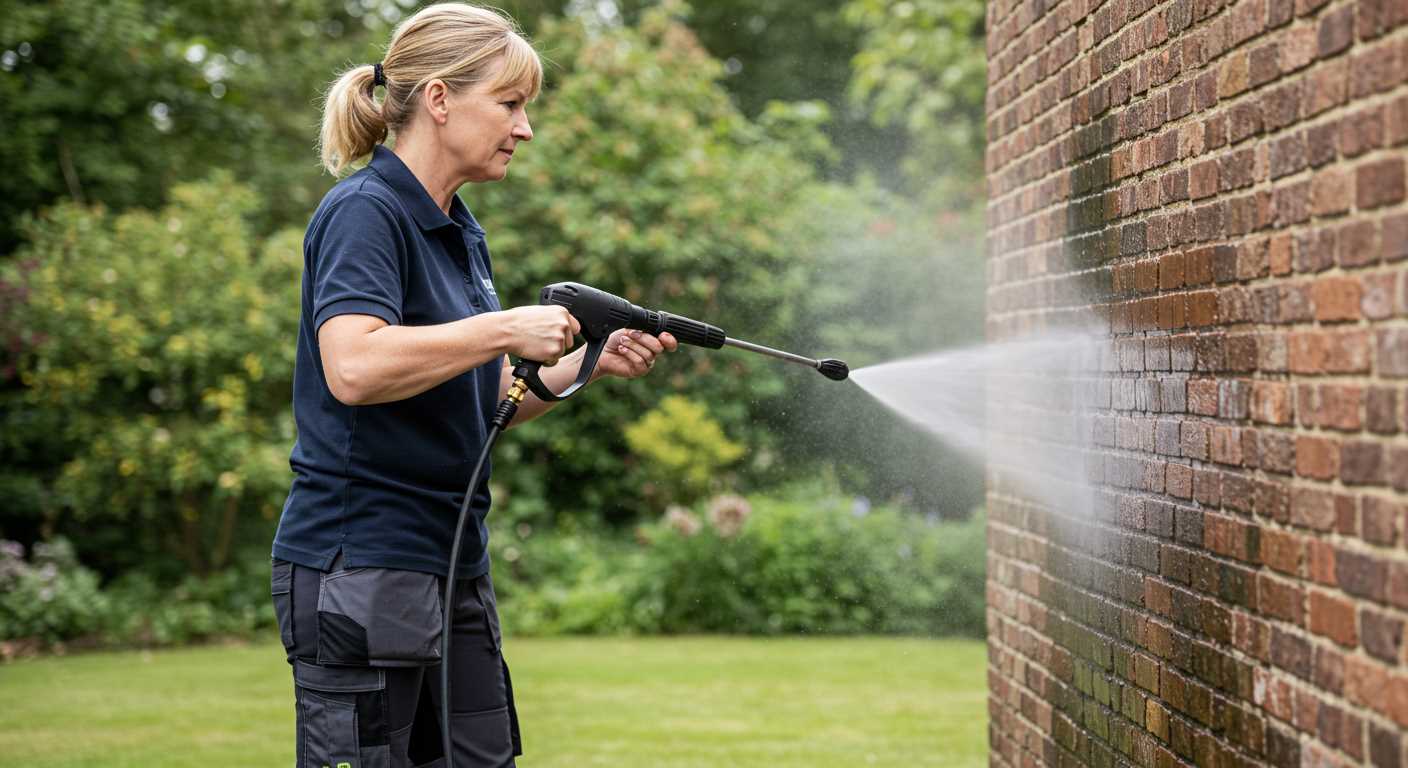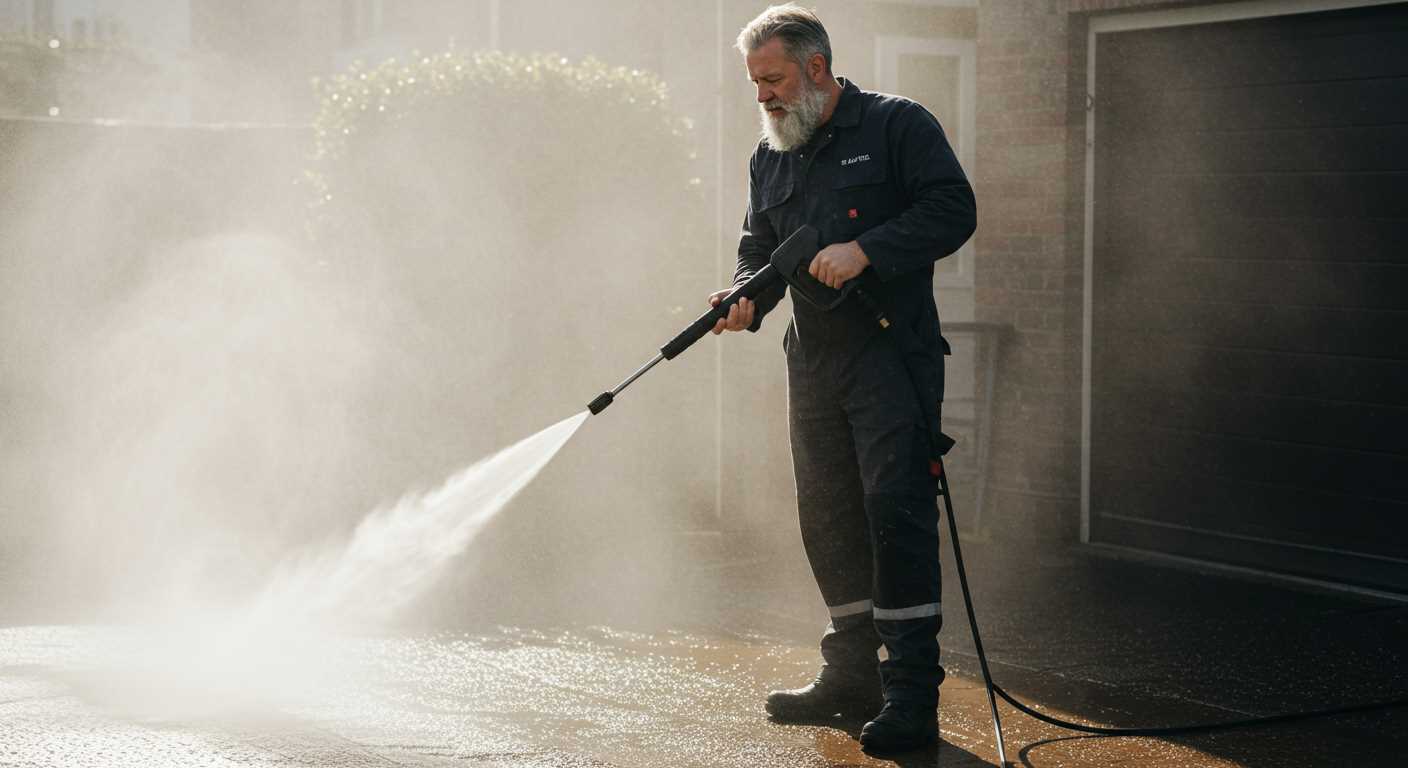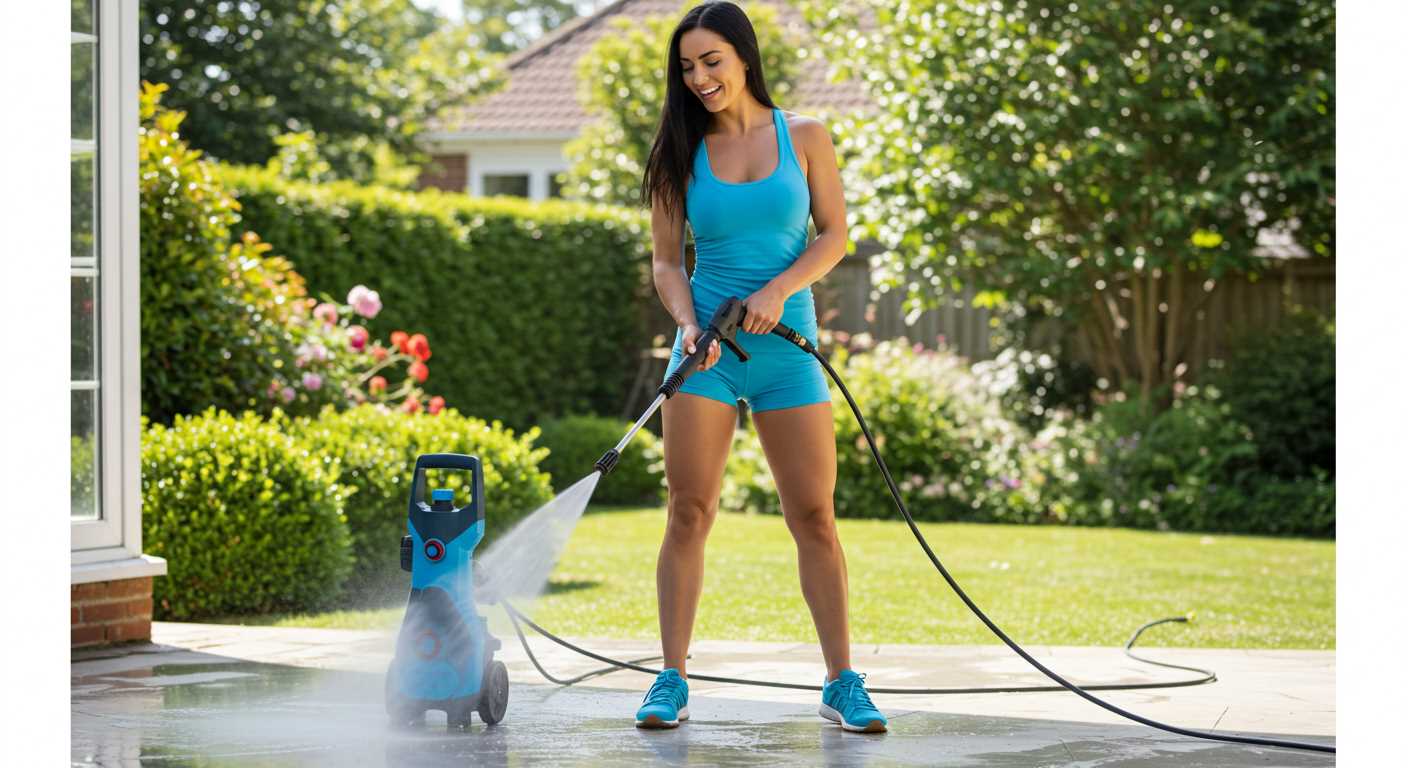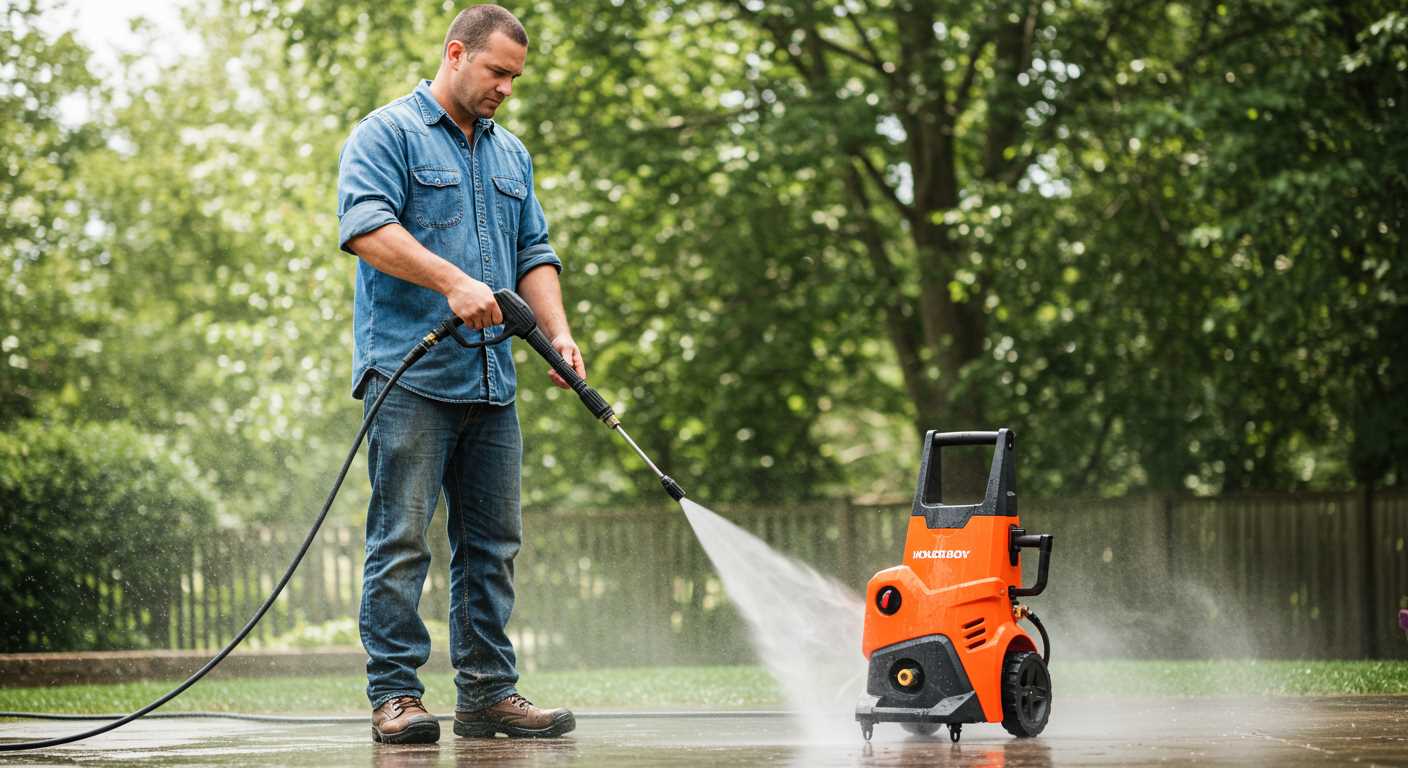



Using a high-pressure cleaning device can be safe for your vehicle, but caution is vital. Select a model that operates below 1200 PSI to minimise the risk of harming the exterior. Higher pressure settings might dislodge protective coatings or scratch the surface.
Always maintain a distance of at least 2 feet from the vehicle when cleaning. This distance reduces the force impact on the paint. Additionally, using a wide-angle nozzle helps disperse the water pressure, rendering the cleaning process less aggressive.
I recommend testing the pressure settings on a small, inconspicuous area first. This practice ensures compatibility before applying it to the entire surface of the vehicle. Moreover, avoid using high-pressure equipment on older vehicles or those with worn-out finishes, as they are more susceptible to damage.
Regularly inspect the nozzle for any debris or clogs, as they can lead to concentrated bursts of water that might cause unintended wear. Lastly, consider employing a cleaning solution specifically designed for automotive uses to enhance the effectiveness without compromising the integrity of the finish.
Impact on Vehicle Surface
Utilising high-powered cleaning devices can indeed pose risks to vehicle finishes. To safeguard your vehicle, consider the following guidelines:
- Distance Matters: Maintain a minimum distance of 2-3 feet from the surface. This prevents concentrated force from damaging the finish.
- Angle of Approach: Always aim the nozzle at a slight angle rather than directly perpendicular. This reduces the risk of chipping or etching.
- Nozzle Selection: Use a wider spray pattern rather than a concentrated jet. A 25-degree or 40-degree nozzle is often safer for automotive surfaces.
Furthermore, avoid using very hot water as it can react with certain finishes and sealants. Opt for a moderate temperature to ensure the longevity of the vehicle’s exterior.
Chemical Considerations
Be cautious with cleaning agents. Some detergents, especially those not formulated for automotive applications, can degrade protective coatings. Look for products labelled as safe for vehicles and follow manufacturer instructions.
- pH-Balanced Solutions: These help prevent damage to finishes and are less likely to harm protective wax or sealants.
- Test in a Small Area: Always test any cleaning solution on a discreet area to ensure compatibility with your vehicle’s surface.
Regular Maintenance
Implementing a regular maintenance schedule can extend the life of your vehicle’s exterior. Hand washing combined with touchless cleaning methods often yields the best results with minimal risk.
- Frequency: Aim for a wash every two weeks to reduce build-up that requires more aggressive cleaning.
- Protective Waxing: Apply a high-quality wax or sealant every few months to act as a barrier against contaminants.
By following these recommendations, you can effectively utilise cleaning technology while preserving the integrity of your vehicle’s surface.
Understanding Pressure Washer Specifications
To avoid damage, select a unit with a pressure rating below 1200 PSI for delicate surfaces. This level is sufficient for removing dirt without harming finishes. Always examine the nozzle type; a wide-angle nozzle distributes water more gently than a narrow jet, minimising risk.
Here are key specifications to consider:
| Specification | Details |
|---|---|
| Pressure Rating | Choose below 1200 PSI to prevent surface damage. |
| Flow Rate | Higher GPM (gallons per minute) enhances cleaning efficiency; aim for 1.5 to 2.0 GPM. |
| Nozzle Type | Opt for fan nozzles (25-40 degrees) for a wider spray pattern. |
| Distance | Maintain a distance of at least 2 feet from the surface to reduce risk. |
| Temperature | Use cold water for general cleaning to avoid thermal shock. |
Inspect the unit regularly for any wear that may affect performance. A reliable machine reduces the likelihood of damage during cleaning. Employing these guidelines extends the lifespan of your vehicle’s finish.
Recommended Pressure Settings for Vehicle Cleaning
I suggest using a setting between 1200 and 1900 psi for external surfaces. This range effectively removes debris without the risk of damaging the finish.
For sensitive areas like windows and mirrors, lower the setting to around 1000 psi. This prevents any risk of shattering or causing cracks.
Certain elements, such as wheel wells and undercarriages, can endure higher levels. For these parts, a setting of up to 2000 psi is acceptable, ensuring thorough cleaning.
Prior to engaging, I recommend testing the chosen setting on a less visible section. Monitor how surfaces respond before proceeding with the entire task.
Additionally, maintain a distance of about 2 feet from the surface when cleaning. This spacing helps safeguard against potential damage.
Always use a wide-angle nozzle to distribute the force evenly. This technique enhances cleaning efficiency while safeguarding the underlying material.
Lastly, avoid using hot water applications as they may compromise sealants or protective coatings. Stick with cold water for optimal results.
Types of Cleaning Attachments and Their Safety
Choosing the right attachments is critical for maintaining your vehicle’s finish without causing damage. Here are key types to consider:
1. Foam Cannon

A foam cannon incorporates soap into a thick foam that clings to surfaces, allowing for better penetration of grime. This attachment operates at lower intensities, ensuring that the suds help lift dirt without abrasive action. Always utilise it at the recommended dilution ratio to prevent unwanted residues.
2. Rotating Brush
A rotating brush scrubs while providing a gentle cleaning solution. Look for brushes with soft, non-abrasive bristles designed specifically for automotive use. Avoid excessive pressure or prolonged contact with delicate surfaces, as this can cause minor scratches.
- Use at a distance of at least 2 feet from the surface.
- Rotate at low speeds to enhance cleaning without risking damage.
3. Foam Nozzle
Foam nozzles deliver a thick layer of foam, softer than direct streams. Position this attachment but always maintain a distance of at least 3 feet from painted surfaces. Doing so minimises the chance of harm while still effectively loosening dirt.
4. Surface Cleaner

Surface cleaners are effective for flat areas like hoods or roofs. They distribute water evenly and reduce the risk of streaks. Ensure that the height adjustment is suitable for your vehicle’s height, maintaining a safe distance to avoid potential scratches.
5. Adjustable Nozzles

Attachable nozzles provide versatility, allowing you to switch from a broad spray to a concentrated beam. Select lower angles for delicate areas and higher angles for tougher spots. Avoid narrow jets directly on the finish to prevent damage.
After using any attachment, inspect the vehicle for any signs of wear or minor scratches. Regular maintenance is crucial in protecting the vehicle’s finish and ensuring that all cleaning efforts keep it in pristine condition.
Common Car Paint Types and Their Durability
Automotive finishes vary significantly in composition, affecting their resilience against various cleaning methods. The most common types include clear coat, single-stage enamel, and metallic paint. Each type demands specific care to maintain its glossy surface and protect against abrasion.
Clear coat, popular for contemporary vehicles, provides a robust barrier against environmental elements. It typically withstands moderate friction and chemical exposure, but high-powered cleaning tools can compromise its integrity, leading to scratches or dullness over time.
Single-stage enamel, often found on older models, offers less durability. This type integrates pigment and clear protective layers into one, making it more vulnerable to scratches and fading. Gentle cleaning techniques are preferred to preserve its finish.
Metallic paint combines metallic flakes within the base coat, resulting in an eye-catching sheen. While this finish can resist fading, it may scratch more easily compared to non-metallic alternatives. Caution is advised when using aggressive cleaning methods to avoid damaging the surface and affecting the finish’s appearance.
In summary, understanding the specific type of automotive finish is crucial for selecting appropriate cleaning methods. Tailoring your approach to the paint type enhances longevity and keeps your vehicle looking its best.
Techniques to Minimise Risk of Paint Damage
To safeguard your vehicle’s finish, I suggest starting with a thorough manual rinse using a garden hose. This step helps remove any loose dirt or debris before introducing high-pressure water. Aim for a gentle spray to avoid any potential harm.
Optimal Distance and Angle
Maintain a distance of at least 2 feet from the surface. Keeping the nozzle at an angle of 30 degrees can further diminish the likelihood of damaging the finish. Directing the flow from the top down prevents any upward force from wedging grit into the coat.
Use of Foam Cannon
Incorporating a foam cannon with a suitable detergent can further reduce the risk of micro-scratches. The foam encapsulates dirt particles, allowing for a softer removal by any subsequent agitation. It’s wise to let the foam dwell for a few minutes before rinsing.
Ensure that the detergent used is compatible with your vehicle’s finish to avoid chemical reactions that could lead to dullness or discolouration. Following manufacturers’ guidelines on the concentration is crucial.
Regularly inspect your nozzle and attachments for wear. A worn nozzle can create unpredictable water jet patterns, which can increase the chances of damage. Replacing affected parts as needed will help maintain safe operation.
Lastly, dry the vehicle with a clean, soft microfiber towel after cleaning. This step helps to eliminate any potential water spots and gives you a chance to identify the state of the finish for any required touch-ups.
Indicators of Potential Paint Damage After Use
After utilising a high-powered cleaning device, I observe specific signs that could indicate damage to the vehicle’s exterior finish. Inspect the surface for any noticeable swirling or scratching. These marks often arise from excessive force or improper angle during cleaning.
Look for areas where the gloss appears diminished or dulled. This might signify that the topcoat has been compromised. Pay attention to any flaking or chipping along edges and curves, as these areas are more susceptible to damage. Additionally, if water beads inconsistently on the surface, it can indicate a degradation of the protective layer.
Surface Feel and Texture
Run your hand across the surface. Any roughness or uneven texture may suggest that particulate matter has been embedded into the coating due to the intense force applied during the cleaning process. It is important to evaluate the response of the clear coat; a gritty feel could necessitate further detailing intervention.
Examination of Trim and Seals
Check rubber trims and seals as these components can also be affected. Signs of wear or detachment may develop after improper usage. This can lead to water ingress and cause further issues down the line. Regular inspections can help preemptively identify these challenges.
Best Practices for Maintaining Vehicle Finish Post-Cleaning

First and foremost, apply a high-quality wax or sealant within a week after cleaning. This creates a protective layer against UV rays and contaminants.
Regularly inspect for any water spots or residue. If found, use a soft microfiber cloth and a pH-balanced detail spray to gently buff the area, preventing potential discolouration.
Always park in shaded areas or use a car cover when possible. Direct sunlight can promote fading and damage the surface over time.
Establish a routine maintenance schedule that includes regular washing followed by polishing. This not only maintains shine but also helps in identifying any imperfections early.
It’s beneficial to use gentle washing techniques, such as the two-bucket method, to avoid scratches. One bucket should contain soapy water, while the other is for rinsing the mitt.
For deeper cleaning, consider clay bar treatment every few months to eliminate embedded contaminants. This needs to be done with a lubricant to ensure the surface remains safe from scratches.
When working on specific areas like wheels and tyres, use dedicated products that can effectively clean without harming the surface. Avoid multi-purpose cleaners, as they may contain harsh chemicals.
Lastly, keep an eye on seasonal changes. In winter, applying a sealant provides additional protection against salt and grime, while in summer, frequent applications of wax can protect against sun damage.










